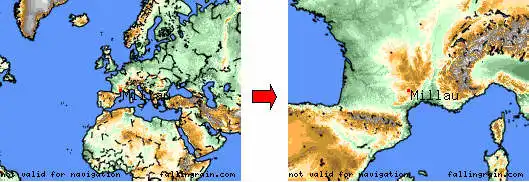Pinguicula longifolia subsp. caussensis
TaxonomyPermalink
- Family: Lentibulariaceae
- Genus: Pinguicula
- Name: Pinguicula longifolia subsp. caussensis
- Sub-classification (Casper): link
- Publication: Casper in Repert. spec. nov 66 (1962) 70
Description (in Casper)Permalink
Folia minora petiolata obovato-oblonga laete-viridia (15) 25 - 60 (80) mm longa (5) 12 - 20 (25) m lata. Flores minores sat magni (15) 22 - 35 (38) mm longi (calcari incluso). Calycis labii superi lobi ovato-lanceolati vel lineares duplo vel triplo longiores quam lati obtusi vel acutiusculi; calycis labii inferi lobi usque ad dimidium longitudinis connati. Corolla caerulea; corollae lobi labii inferi macula albida signati longiores quam lati inter se plus minusve tegentes apice rotundati vel plane retusi. Calcar rectum conicum (5) 8 - 11 (13) mm longum tubum limbumque corollae subaequans.
Origin and HistoryPermalink
Pinguicula longifolia subsp. caussensis is an endemic to a small area in France called Les Causses. Jurg Steiger in “Pinguicula (Lentibulariaceae) : The cool climate species of the northern hemisphere - Morphology, Biology, Cultivation” a text from the second conference of the International Carnivorous Plants Society, Bonn (Germany), May 30 - June 1st, 1998, wrote that compared to the plants of the Pyrenees, this subspecieshas considerably smaller flowers with less overlapping corolla lobes. Althought growing in much milder climate its summer leaves are by far not far as long as those of the plants from The Pyrenees and it does not present glands on the underside of the leaves.
Location / MapPermalink
Pinguicula longifolia subsp. caussensis is an endemic to a small area in France called Les Causses. The pictures below are from plants from Gorges du Tarn Area. Located at 15 Km of Millau, the Gorges of the Tarn river are a broad canyon of 50 km length which was dug along the centuries by the river Tarn. Deep from approximately 400 meters, the gorge separate “Causse de Sauveterre” and “Causse Mejean”, high limestones trays located at an altitude of 1000 meters.
(click on the map for better location and relief map)
HabitatPermalink
You can found Pinguicula longifolia subsp. caussensis growing overhanging in windy gorges in moss on wet vertical limestone walls at altitudes around 500m.
Introduction to HorticulturePermalink
My plants comes from J.J. LABAT collection (manager of the famous French Nursery “Nature et Paysage”).
Growth and PropagationPermalink
(North hemisphere, France near Paris, in a garden - see the map
Life CyclePermalink
In spring, the cycle begins by the opening of the winter buds and the production of the first carnivorous leaves. The first leaves are followed by the flowers in summer. New carnivorous leaves are produced during all the season. Near autumn, or earlier, if your conditions are not optimal, the next hibernacula is revealed in the centre of the rosette. Then leaf production stops and the old leaves decay slowly. The plant (reduced now to a small hibernacula) is ready for winter and for the next cycle.
MediaPermalink
I use a 100 % mineral media : 2 perlite, 2 vermiculite, 1 small sand (for aquarium), 1 fine white sand, 1 pouzzolane (volcanic lava), 2 marly calcareous detritus.
PotPermalink
Plastic, colour terracotta, diameter 12.5cm, height 12cm.
CultivationPermalink
The long term cultivation of temperate Pinguicula is difficult : If the summer growing conditions are not optimal, the plants will form very weak hibernacula which easily rot.
Optimal summer growing conditions are : good air humidity, cool temperature and UV lights.
I grow my plants in my greenhouse all the year with a good amount of direct sun.
PropagationPermalink
By seeds or using the gemmae produced around winter hibernacula.

.webp)
.webp)
.webp)
.webp)
.webp)
.webp)
.webp)
.webp)
.webp)
.webp)
.webp)
.webp)
.webp)
.webp)
.webp)
.webp)
.webp)
.webp)
.webp)
.webp)
.webp)
.webp)
.webp)
.webp)
.webp)
.webp)